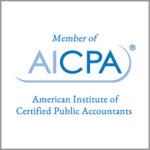From J.D. Supra —
On June 5, President Trump signed into law H.R. 7010 – the Paycheck Protection Program Flexibility Act of 2020 (“PPPFA”). The PPPFA makes significant borrower favorable amendments to the Paycheck Protection Program (“PPP”).
Background.
As our readers know, the PPP loan program was enacted pursuant to the CARES Act as a tool to help small businesses keep employees on their payroll. The draw of the program is the ability for borrowers to have the loans forgiven. In other words, the loans can be essentially converted into tax-free grants. One caveat is that borrowers are permitted to spend PPP loan proceeds on very limited types of expenditures. PPP loans may only be spent on payroll, rent, utilities and interest on certain pre-existing obligations.
In order to obtain loan forgiveness additional conditions must be satisfied. The CARES Act permitted loan forgiveness only to the extent the loan proceeds were spent during an eight-week period following loan origination (the “Covered Period”). The Small Business Administration (“SBA”) added a requirement that payroll expenses constitute at least 75% of Covered Period expenditures to achieve full loan forgiveness. Moreover, subject to one large exception, a portion of loan forgiveness will be lost for borrowers who reduce the number of full-time equivalents on their payroll OR reduce the average hourly wage or annual salary of an employee by more than 25%. The aforementioned exception to loan forgiveness reduction applies (in its original form) where (i) reductions in full-time equivalents or average hourly wages and salaries took place between February 15 and April 26, 2020 and (ii) the number of full-time equivalents and compensation are restored by June 30, 2020.
PPP Flexibility Act Changes.
Longer Covered Period, Reduced Payroll Costs Requirement. The most significant changes are an increase in the Covered Period to 24 weeks from 8 weeks; and the replacement of the 75% payroll expenditure requirement with a reduced 60% payroll expenditure requirement. In other words, borrowers now have 24 weeks to spend their PPP loan proceeds and can spend up to 40% of the loan amount on rent, utilities and interest on pre-existing debts without forfeiting any loan forgiveness.
Borrowers with existing PPP loans can choose to stick with the original 8-week Covered Period. Such borrowers will be obligated to maintain payroll levels only through their original 8-week Covered Period in order to qualify for maximum loan forgiveness (or qualify under the Restoration Rule described below). On the other hand, borrowers using the new expanded 24-week covered period will need to maintain payroll levels for the full 24 weeks in order to avoid reductions in their forgivable loan amounts (or qualify under the Restoration Rule).
Restoration Rule. As noted above, a reduction in payroll levels during the Covered Period would result in a reduction in the amount of the PPP loan forgiven unless the payroll levels were restored by June 30, 2020. The PPPFA replaces the June 30, 2020 date with December 31, 2020. Accordingly, if the borrower cuts the number of full-time equivalents or the salary or wages of its employees between February 15, 2020 and April 26, 2020, those reductions will not result in a loss of loan forgiveness if those cuts are restored by December 31, 2020.
Maturity. After enactment of the PPPFA, PPP loans with any unforgiven loan amounts will have a minimum maturity of 5 years (previously 2 years). The PPPFA states that lenders and borrowers will not be prohibited from mutually agreeing to modify the maturity of pre-PPPFA PPP loans to conform to the new 5-year minimum maturity date provided by the PPPFA.
Loan Payment Deferral. The PPPFA extends the loan payment deferral period. Originally, borrowers were not required to make any loan payments for six months. Now PPP loan repayment will be deferred until the date on which the SBA remits the loan forgiveness amount to the lender. PPP loan recipients who do not apply for forgiveness will not be required to make loan payments until 10 months following the close of the Covered Period.
Rehiring, Employee Availability. Additionally, the borrower will not suffer a reduction of its loan forgiveness amount due to reductions in the number of full-time equivalent employees IF the borrower is able to document EITHER:
(A) The borrower was both unable to rehire individuals who were employees on February 15, 2020 AND unable to hire similarly qualified employees on or before December 31, 2020;
OR
(B) The borrower was unable to return to the same level of business activity as of February 15, 2020 due to compliance with requirements or guidance issued by the Secretary of Health and Human Services, the Director of the Centers for Disease Control and Prevention, or the Occupational Safety and Health Administration related to the maintenance of standards for sanitation, social distancing, or any other worker or customer safety requirement related to COVID–19.
Payroll Tax Deferral. PPP borrowers are now permitted to delay paying the employer’s share of 2020 payroll taxes. One-half of the employer’s share of payroll taxes are now due December 31, 2021 and remaining half will be due December 31, 2022. PPP borrowers can now enjoy this deferral even if they have their PPP loan forgiven. Previously, PPP borrowers were denied this benefit once their loans were forgiven.
The new PPPFA changes will benefit some PPP borrowers more than others. The SBA and Treasury Department will likely provide additional guidance soon.
We hope you can make use of this advice to turn your PPP loan into a free COVID-19 stimulus grant from the U.S. Congress’ CARES Act.
If you need professional help preparing your PPP loan forgiveness application, use the Contact Us box below to get in touch today!
Contact Us
Do business with a different kind of CPA firm – the CPA Advisory Group
Visit Us
131 Dilmont Dr., Suite 200
Columbus, OH 43235
CPA Advisory Group, Inc.
Leading Small Businesses and Individuals to Success






